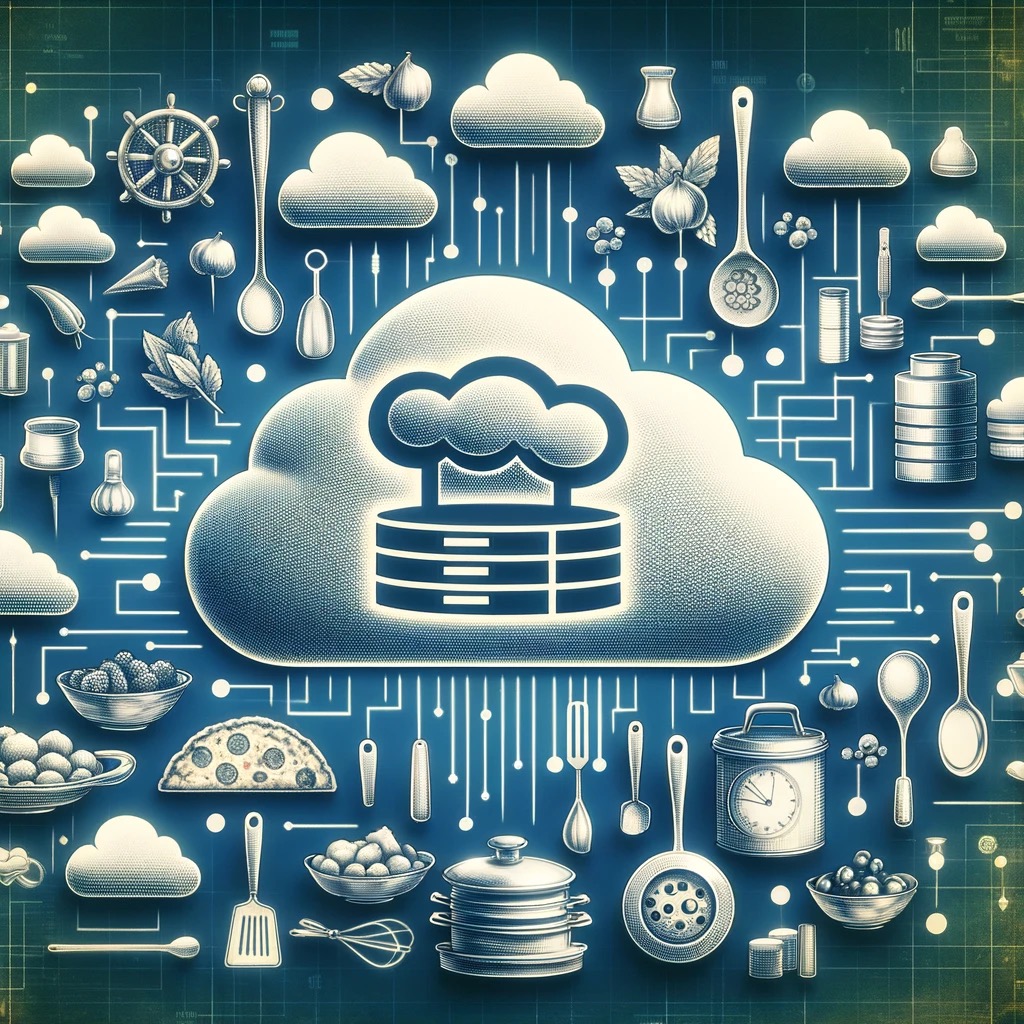Choosing the right database for your project is akin to selecting the perfect ingredient for your next culinary masterpiece. It’s not just about what you like; it’s about what works best for the dish you’re preparing. In the digital world, this means understanding the unique flavors of data storage solutions and how they can best serve your application’s needs. Let’s embark on a journey through the landscape of databases, armed with insights from a document that breaks down the types and considerations for selecting the right one for your project. As we navigate this terrain, we’ll spice up our understanding with examples from Google Cloud, Azure, and AWS.
Relational Databases: The Classic Cuisine
Relational databases, like a time-honored recipe, have been the cornerstone of data management systems for decades. These databases store data in tables, akin to a well-organized pantry, with rows representing records and columns representing attributes.
The primary characteristics of relational databases include:
- Structured Query Language (SQL): The standardized language for interacting with relational databases. SQL is like the recipe you follow; it allows you to insert, query, update, and delete data, ensuring each interaction is precise and predictable.
- Data Integrity: Ensuring the accuracy and consistency of data is a fundamental aspect of relational databases. They utilize constraints like primary keys, foreign keys, and unique indexes to maintain reliable relationships between tables.
- ACID Transactions: This is the gold standard for data operations, guaranteeing that transactions are Atomic, Consistent, Isolated, and Durable. It’s like making sure your cooking process is safe, consistent, and yields the expected delicious result every time.
- Normalization: The process of structuring a database to reduce data redundancy and improve data integrity. Think of it as organizing your ingredients to ensure you don’t have unnecessary duplicates cluttering your workspace.
- Scalability: While traditionally not as horizontally scalable as NoSQL databases, modern relational databases in the cloud, such as Google Cloud SQL, Azure SQL Database, and Amazon RDS, offer scalability capabilities to meet the demands of growing applications.
- Performance: Known for their strong performance in handling complex queries and transactions. The efficiency of relational databases is like using a high-quality knife – it makes the preparation both smooth and precise.
These databases shine in scenarios where data is well-defined and relationships between different data entities need to be strictly maintained, such as in customer management systems or financial record-keeping. As we embrace cloud computing, services like Google Cloud SQL, Azure SQL Database, and Amazon RDS bring the reliability of relational databases to the cloud, offering managed services that scale with your needs, ensuring data is always served with freshness and speed.
NoSQL Databases: The Fusion Food Trend
NoSQL databases are the avant-garde chefs of the data world, dismissing the strict schema of traditional relational databases for a more liberated approach to data management. These databases come in various forms, each with its distinct flavor:
- Flexibility in Data Modeling: NoSQL databases don’t require a fixed schema, allowing you to store data in multiple formats. This is particularly useful for accommodating the diversity of data types and structures found in modern applications.
- Scalability: These databases excel at horizontal scaling, often built with distributed architecture in mind. They can handle vast amounts of data spread across many servers with ease.
- Variety of Data Stores: NoSQL encompasses several types of data stores, including key-value (e.g., Redis), document (e.g., MongoDB), wide-column (e.g., Cassandra), and graph (e.g., Neo4j), each optimized for specific types of queries and operations.
- High Performance for Specific Workloads: NoSQL databases are often designed to offer high performance for particular types of data and queries, such as quick read/write operations for key-value stores or efficient traversal of networks for graph databases.
- Agility: They allow for rapid iteration and development as the application evolves, thanks to their schema-less nature. This characteristic is particularly advantageous in agile development environments where requirements are constantly changing.
In the realm of cloud platforms, Google Cloud’s Firestore, Azure Cosmos DB, and Amazon DynamoDB are exemplary NoSQL services. Firestore provides a flexible document model that’s great for real-time updates and syncing data across user devices. Azure Cosmos DB stands out with its multi-model capabilities, allowing you to use key-value, document, and graph models in one service. Amazon DynamoDB offers a managed NoSQL service with built-in security, backup, restore, and in-memory caching for internet-scale applications.
NoSQL databases, with their ability to handle unstructured and semi-structured data, are ideal for scenarios such as social media feeds, real-time analytics, and IoT data streams, where the data’s structure may change over time or where the application demands speed and scalability over complex transactions.
In-memory Databases: The Fast Food of Data Stores
In-memory databases are the sprinters in the database Olympics, offering unparalleled speed by residing entirely in RAM. This approach allows for rapid data access, akin to the convenience of fast food, yet delivering gourmet quality performance. Here’s what sets them apart:
- Speed: The primary advantage of in-memory databases is their velocity. Storing data in RAM rather than on slower disk drives provides near-instantaneous data retrieval, which is crucial for time-sensitive operations.
- Volatility: In-memory databases typically store data temporarily due to the volatile nature of RAM. This means that data might be lost on system shutdown unless the database is backed by persistent storage mechanisms.
- High Throughput: These databases can handle millions of operations per second, making them suitable for high-performance computing tasks where transaction speed is critical.
- Simplicity of Design: With the elimination of disk storage, the internal architecture of in-memory databases is simpler, which often leads to less operational complexity and overhead.
- Real-Time Analytics: In-memory databases are ideal for scenarios requiring real-time analytics and decision-making, as they can quickly process large volumes of data on the fly.
- Scalability Challenges: While incredibly fast, in-memory databases can be limited by the physical memory available on the server. However, distributed systems can help overcome this limitation by pooling the memory resources of multiple servers.
In the cloud environment, Google Cloud Memorystore and Amazon ElastiCache are prime examples of managed in-memory database services. Google Cloud Memorystore is optimized for Redis and Memcached, providing a fully managed in-memory data store service to build application caches that provide sub-millisecond data access. Amazon ElastiCache offers similar capabilities, allowing you to deploy, run, and scale popular open-source compatible in-memory data stores.
In-memory databases like Memcached and Redis are the go-to choice for scenarios where the need for speed trumps all else. They are especially beneficial for applications such as real-time analytics, session stores, caching, and high-frequency trading platforms. While they provide the fast-food-like speed of data access, they do so without compromising the integrity and quality of the data served.
Document and Wide-Column Databases: The Gourmet Selection for Complex Data
When it comes to handling the multi-layered complexity of data, document and wide-column databases are the connoisseurs’ choice. They provide a nuanced approach to data storage that’s both flexible and efficient, akin to a gourmet meal crafted to satisfy the most discerning of palates. Let’s delve into their defining features:
- Document Databases: These are akin to a chef’s mise en place, organizing ingredients (data) in a way that’s ready to use and easy to combine. They store data in document formats, typically JSON, BSON, or XML, which allows for nested data structures and a rich representation of hierarchical relationships. With their schema-less nature, document databases like MongoDB and Couchbase offer the flexibility to store and retrieve data as complex, nested documents, making them ideal for content management systems, e-commerce platforms, and any application that deals with diverse, evolving data models.
- Wide-Column Databases: Imagine a vast buffet spread where dishes (data columns) can be arranged in any number of configurations, depending on the number of guests (queries). Wide-column databases like Cassandra and ScyllaDB use a table format, but unlike relational databases, the number of columns can vary from row to row. This structure is superb for querying large, distributed datasets, and excels in both read and write performance. They are particularly well-suited for handling time-series data, product catalogs, and any scenario where queries require rapid access to massive volumes of data.
- Scalability and Performance: Both document and wide-column databases are designed to scale out across clusters of machines, which is like expanding your kitchen space and cooking stations to serve more guests without delays. This distributed nature allows them to handle more data and traffic as your application grows.
- Flexibility and Speed: They offer the agility to adjust to changing data and query patterns on the fly, much like a chef improvising a new dish to accommodate a guest’s dietary restrictions. This makes them particularly useful for businesses that evolve rapidly and need to iterate quickly.
In the cloud, Google Cloud Firestore provides a highly scalable, serverless document database ideal for mobile, web, and server development. Amazon DocumentDB mimics the capabilities of MongoDB while automating time-consuming administration tasks such as hardware provisioning, database setup, and backups. Azure Cosmos DB and Amazon Keyspaces offer managed wide-column services that handle the complexity of deployment, management, and scaling of these databases, providing an experience similar to enjoying a meal at a high-end restaurant where everything is taken care of for you.
Graph Databases: The Interconnected Culinary Network
Graph databases are like the social butterflies of the database world, excelling at managing data that is densely connected and interrelated, much like the relationships in a bustling dinner party. Here’s why they are becoming increasingly essential:
- Relationship Handling: Graph databases, such as Neo4j and Amazon Neptune, are built to store and navigate relationships efficiently. They treat relationships between data points as first-class entities, making it ideal for social networks, recommendation engines, or any domain where the connections between entities are crucial.
- Flexibility: Just as a skilled host might rearrange seating to foster conversation, graph databases allow for flexible manipulation of the relationships between data without the need for extensive restructuring.
- Performance: When it comes to traversing complex relationships or performing deep queries across large networks, graph databases are unparalleled, serving insights with the speed of a quick-witted conversationalist.
- Real-World Modeling: They mirror the intricacies of real-world systems, from the neural pathways of the brain to the organizational charts of a large enterprise, reflecting how our world is structured and how entities relate to one another.
Imagine walking into a dinner party where every guest is a dish with a complex network of flavors and ingredients. This is the world of graph databases sophisticated, intricate, and richly connected. In this culinary network, relationships are the stars of the show, and graph databases are the maestros conducting the symphony.
- Azure’s Flavorful Connections: Azure Cosmos DB, with its Gremlin API, is like a master chef who specializes in fusion cuisine. It adeptly combines ingredients from various culinary traditions to create something greater than the sum of its parts. In the digital realm, this translates to managing graph data with the flexibility and ease of a globally distributed, multi-model database service.
- Google Cloud’s Gourmet Partnerships: While Google Cloud doesn’t craft its own graph database dishes, it provides a platform where master chefs like Neo4j and TigerGraph set up their pop-up restaurants. These third-party services, available on Google Cloud Marketplace, are akin to guest chefs bringing their unique recipes to a shared kitchen, offering their specialties to a wider audience.
- Amazon’s Neptune: The Specialty Cuisine: Amazon Neptune is the specialty restaurant down the street that focuses exclusively on one type of cuisine—graph data. It’s designed from the ground up to handle complex and richly interconnected data, serving up insights with the efficiency and precision that only a specialist can offer.
With these services, the applications are as varied and vibrant as the world’s cuisines, ideal for recommendation systems that suggest the perfect wine pairing or social networks mapping the web of relationships. Whether it’s Azure Cosmos DB serving a blend of graph and other database models, Google Cloud’s marketplace offerings, or Amazon Neptune’s dedicated graph service, the options are as diverse as the data they manage.
Choosing Your Perfect Match
Selecting the right database isn’t just about matching a type to a use case; it’s about considering scalability, performance, cost, and ease of use. Whether you’re a startup looking to scale, an enterprise needing robust performance, or anywhere in between, there’s a database service tailored to your needs across Google Cloud, Azure, and AWS.
Final Thoughts
In the quest for the right database, consider your project’s unique requirements and how different database services can meet them. Like a skilled chef choosing the right ingredients, your selection can elevate your application, ensuring it meets the tastes and needs of your users. Remember, the best database choice is one that aligns with your project’s goals, offering the perfect blend of scalability, performance, and manageability.
As we continue to explore and publish on these topics, let’s keep the conversation going. Whether you’re a seasoned DevOps engineer, a cloud architect, or somewhere in between, your experiences and insights can help shape the future of database technology. Let’s build systems that aren’t just functional but are architecturally sound, scalable, and a joy to work with.









